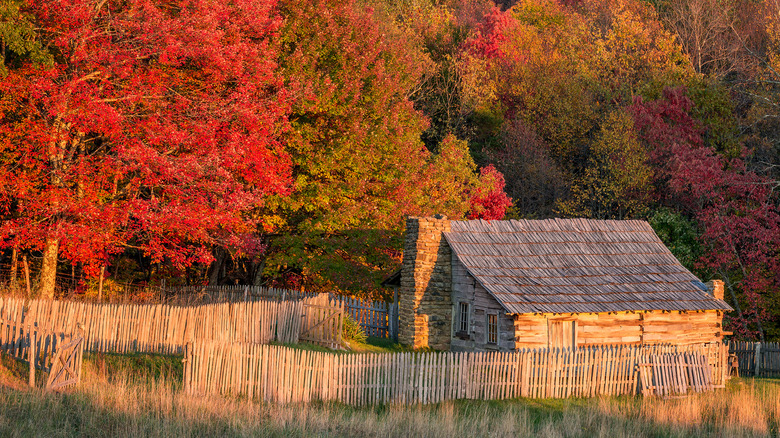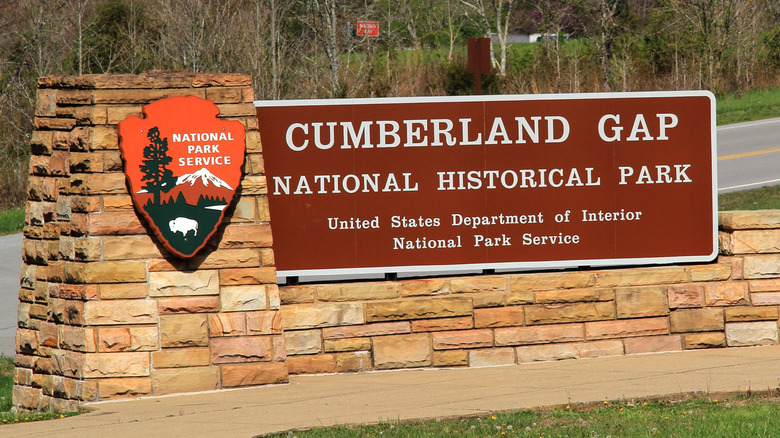Enjoy Breathtaking Fall Foliage At This Underrated National Historic Park
Editor's note: Cumberland Gap National Historical Park is not advisable to travel to due to the devastation caused by Hurricane Helene. Please check local reports and forecasts before making travel plans.
Fall is a magical time to be outdoors. With the cooler temperatures and spectacular fall foliage, it is a perfect time to hike and camp. However, whether you are going on a solo hike or planning a group camping excursion, odds are you want to be able to enjoy the fall foliage without being overwhelmed by crowds. If you are among those who want to have a slice of trail to yourself as you hike through the autumn leaves, Cumberland Gap National Historical Park very well could be the perfect spot for you.
While Cumberland Gap is not part of the Appalachian Trail, it is situated in the Appalachian Mountains. In fact, it is a historical crossing point across the mountain range. Since it is surrounded by a number of areas considered to be the best fall camping destinations in the U.S., Cumberland Gap National Historical Park is often overlooked, as it is somewhat overshadowed by its more famous neighbors. However, you can enjoy breathtaking fall foliage at this underrated national historic park.
Visiting Cumberland Gap National Historical Park
Located at the juncture point of Kentucky, Virginia, and Tennessee, visitors to Cumberland Gap National Historical Park have the unique opportunity to hike through three states in a single outing. As the name suggests, the Cumberland Gap is a historical setting. It is considered so not only for its use as an early gateway for Native Americans and settlers to access the continent to the west of the Eastern Region, but also for the struggle over the gap during the Civil War.
Beyond fall foliage, visitors can expect to encounter a wide array of wildlife. Among the nearly 400 different types of animals known to live within the park's boundaries are bobcats, deer, elk, gray foxes, and dozens of songbirds. Do be advised, however, that the park is also home to black bears. While you are most likely to run into a bear during your summer adventures, they will still be active in autumn. So, be sure to take precautions such as making noise to avoid bears as you move along the trail.
There are miles of trails to explore within the 24,000-acre park. Visitors can not only hike through the Gap, but also visit the Cumberland Gap Cave, although it closes annually during fall and winter for bat hibernation center, and explore the buildings and structures remaining from early settlers within the historic Hensley Settlement. There are also ample camping opportunities within the park. While entrance to the park is free, there are some fees associated with overnight camping and various ranger-led tours and activities.
Tips for viewing and photographing fall foliage
When in Cumberland Gap National Historical Park during autumn, fall foliage is all around. However, hiking along the Ridge Trail allows you to view the park from end to end, as this 21-mile trail crosses the park from boundary to boundary. To catch a view of the foliage filling the Cumberland Gap, head to the Pinnacle Overlook, which allows you to look out across the entire expanse.
Of course, almost everyone visiting during the fall foliage season will want photographs to document their excursion. According to Nikon USA, two of the key elements to capture great photos of fall foliage are location and elevation. Cumberland Gap N.H.P. offers plenty of each. To add some ambiance to the photo location, you may want to consider the buildings within Hensley Settlement or one of the dramatic cliffs or waterfalls. Nikon also states that overcast days allow you to capture the vivid colors throughout the day and suggests taking your photos early and late (when the light is softer) on sunny days.


